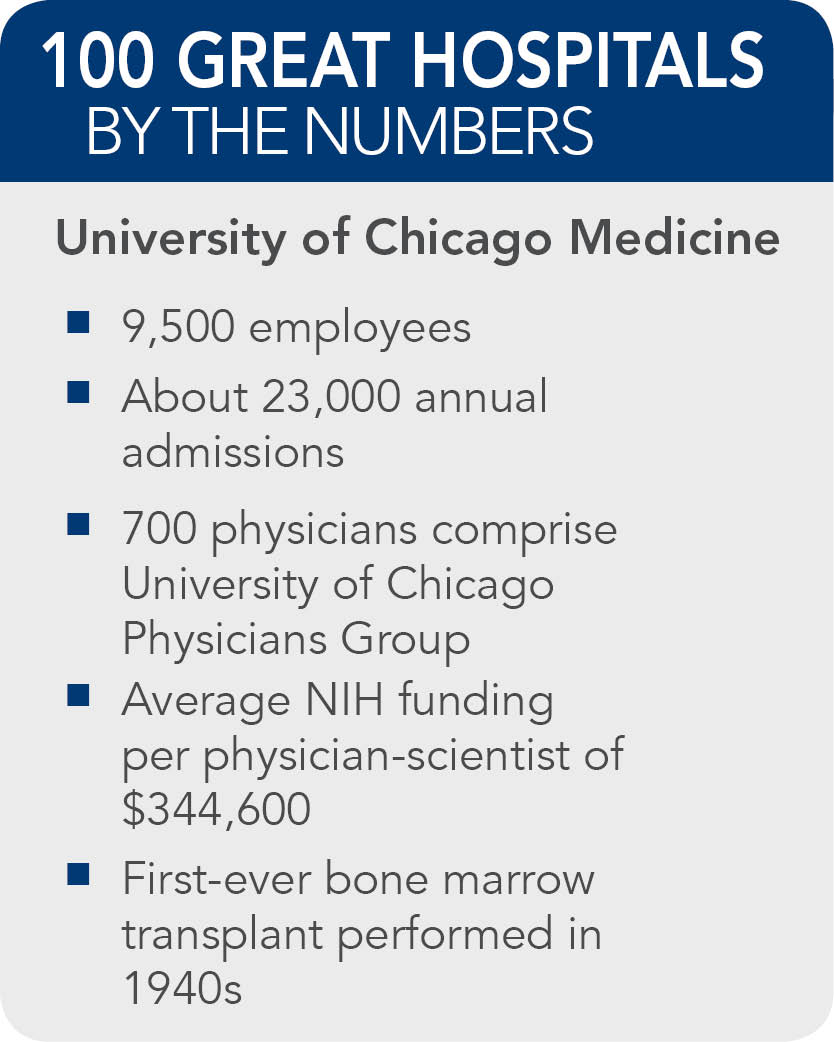University of Chicago Medicine. University of Chicago Medicine got its start in 1927. The university board of trustees set aside money to create an academic medical center in 1916, but World War I hindered the development. During the 1950s and 1960s, University of Chicago Medicine doubled in size, and today it stands as one of the preeminent clinical hubs, situated in Chicago's Hyde Park neighborhood.
 At the heart of University of Chicago Medicine — formerly known as University of Chicago Medical Center and University of Chicago Hospitals — are several hospital campuses. The $700 million, 292-bed Center for Care and Discovery opened in February 2013, focusing on cancer, digestive diseases, neurosciences, advanced surgery and imaging. The primary adult inpatient facility is Bernard A. Mitchell Hospital, which houses the emergency department, intensive care units and the burn and trauma centers. The Duchossois Center for Advanced Medicine holds most of the campus' diagnostic and outpatient treatment services.
At the heart of University of Chicago Medicine — formerly known as University of Chicago Medical Center and University of Chicago Hospitals — are several hospital campuses. The $700 million, 292-bed Center for Care and Discovery opened in February 2013, focusing on cancer, digestive diseases, neurosciences, advanced surgery and imaging. The primary adult inpatient facility is Bernard A. Mitchell Hospital, which houses the emergency department, intensive care units and the burn and trauma centers. The Duchossois Center for Advanced Medicine holds most of the campus' diagnostic and outpatient treatment services.
University of Chicago Medicine holds many awards from U.S. News & World Report, including top 50 spots nationally for cancer and gastroenterology/GI surgery. As the clinical arm of the University of Chicago Division of the Biological Sciences and University of Chicago Pritzker School of Medicine, physicians, scientists and researchers also work diligently within several specialized programs, including the Center for Global Health, the Institute for Genomics and Systems Biology and the Howard Hughes Medical Institute.
The academic medical center is affiliated with 12 winners of the Nobel Prize in Physiology or Medicine, including Charles B. Huggins, MD, for his discoveries concerning hormonal treatment of prostatic cancer. University of Chicago Medicine also plays home to numerous medical firsts, including the first bone marrow transplant, the first sleep laboratory and the first usage of nuclear medicine.

Photo Credit: Tom Rossiter, Brian Fritz
 |
 |


